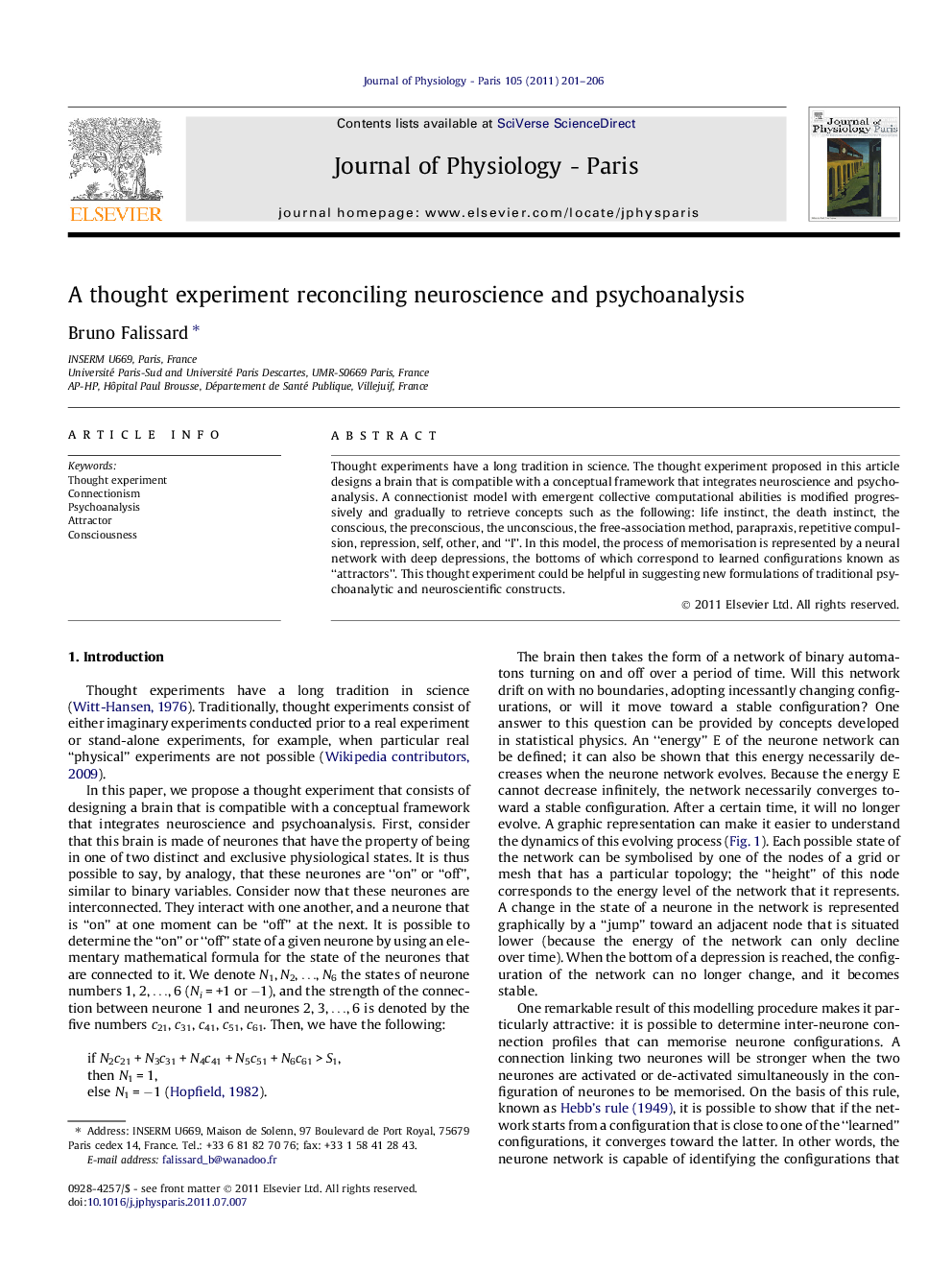| کد مقاله | کد نشریه | سال انتشار | مقاله انگلیسی | نسخه تمام متن |
|---|---|---|---|---|
| 2842407 | 1571029 | 2011 | 6 صفحه PDF | دانلود رایگان |

Thought experiments have a long tradition in science. The thought experiment proposed in this article designs a brain that is compatible with a conceptual framework that integrates neuroscience and psychoanalysis. A connectionist model with emergent collective computational abilities is modified progressively and gradually to retrieve concepts such as the following: life instinct, the death instinct, the conscious, the preconscious, the unconscious, the free-association method, parapraxis, repetitive compulsion, repression, self, other, and “I”. In this model, the process of memorisation is represented by a neural network with deep depressions, the bottoms of which correspond to learned configurations known as “attractors”. This thought experiment could be helpful in suggesting new formulations of traditional psychoanalytic and neuroscientific constructs.
► Thought experiments can challenge traditional representations used in science.
► A simple model of brain can explain sophisticated cognitive processes.
► Neural networks have emerging properties compatible with psychoanalysis.
► The mathematical notion of attractor is crucial in this context.
Journal: Journal of Physiology-Paris - Volume 105, Issues 4–6, December 2011, Pages 201–206